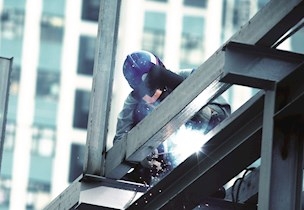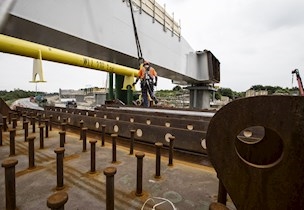Engineering critical assessment of welded structures (ECA)
Analysis of a welded structure with flaws or flaw indications, tells you whether they are critical within the remaining service life and whether the structure may be used without risk of failure.
Not all flaws are critical
FORCE Technology provides fracture mechanics analyses of flaws in welded structures. The flaws may be found after completed welding or after a subsequent inspection. Fracture mechanics analyses may reduce the costs of flaws found in a structure as not all flaws are critical.
Fracture mechanics analysis – are repairs necessary?
Flaws in welds are often found by visual inspection or various NDT methods such as ultrasound or x-ray. When we detect a flaw, the repair may be very costly if the structure is hard-to-get-to, or if the repair requires shutdown.If the repair is costly or comprehensive, fracture mechanics is a very serviceable tool with which to assess flaws found in welds. Not all flaws are critical to the service life, and by analysis we assess whether the flaw will reach a critical size within the structure’s service life.
We use recognised standards to assess flaws in welded structures, and we account for flaw type, state of stress and position of the flaw. We assess the probability of failure, suitably conservatively, by use of partial coefficients based on the consequences of failure and whether some sort of redundancy exists.
In order to make a fracture mechanics analysis, knowledge of the mechanical properties of the material including fracture mechanics values such as KIC, CTOD or JIC are required. The stress spectrum to which the weld is exposed, must be known, which for instance can be determined by strain gauge measuring or Finite Element analysis.Reduce the number of repairs
When flaws or flaw indications have been detected in a weld, many companies choose the immediate solution; repair. If a structure or a plant is large and has many welds, comprehensive repair work can be costly because of the price for the repair but also because of a possible loss of turnover due to a shutdown.At a fracture mechanics analysis and analysis of all flaw indications, we divide the various indications into three categories:
- safe
- safe if regularly inspected
- repair
”Safe if regularly inspected” means that the indication is on the borderline of reaching a critical flaw size during the service life, and regular inspection is therefore necessary.
The last category is for indications that are already so critical that there is every possibility of failure and they thus exceed the permissible risk in terms of safety.
FORCE Technology has experience in fracture mechanics analysis within:
- wind turbines
- offshore industry
- bridges
- cranes
- steel structures.
Services

Failure and damage investigation
Determine the cause of failure and prevent it from reoccuring.

Strength analysis of welded structures
Strength analysis of welded structures can protect you from failure and accidents.

Welding inspection
Inspection of the welding work is crucial in order to obtain the proper quality.


